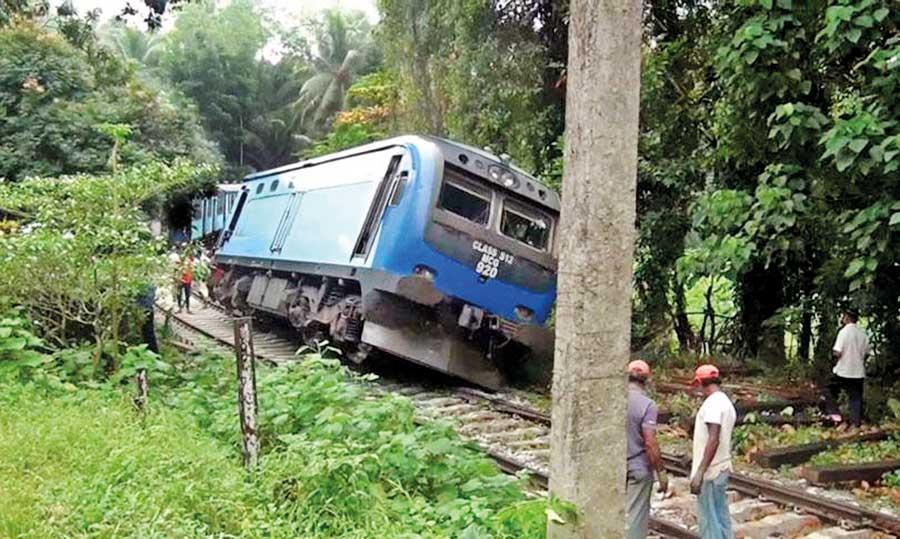Reply To:
Name - Reply Comment
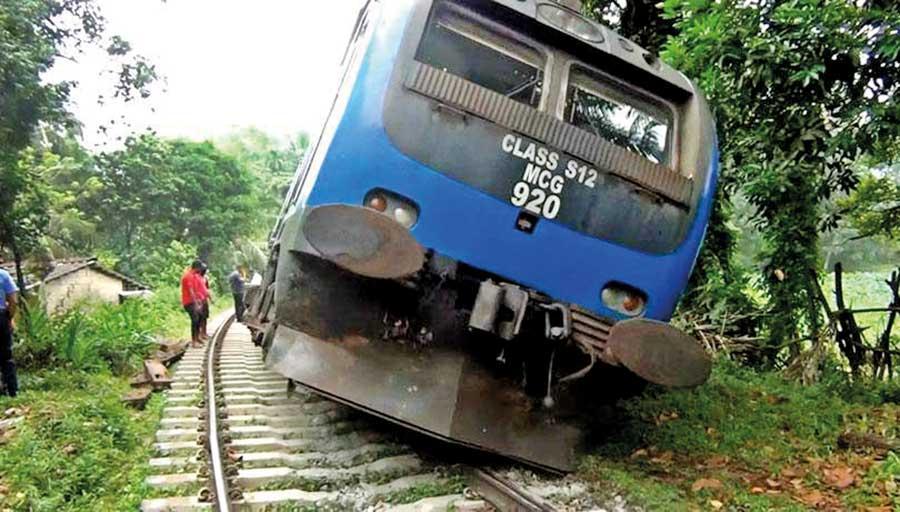
The most alarming derailment this year occurred on April 7 on the Eastern Line when a train derailed near Trincomalee, injuring 17 people, including two Railway Department employees
Train derailments have been a persistent concern in Sri Lanka over the past few years, with the total annual number of derailments reaching 111 in 2021 and 117 in 2022, according to data obtained from Sri Lanka Railways (SLR). In just the first half of 2023, the total derailment count has already reached 54. These statistics include both running lines and rail yards, and highlight the concerning state of our rail transport, with the most recent derailment occurring on June 27 on the Kelani Valley Line. That derailment resulted in the cancellation of all trains operating on the Kelani Valley Line that evening as well as the following morning due to damage to the rail track.
obtained from Sri Lanka Railways (SLR). In just the first half of 2023, the total derailment count has already reached 54. These statistics include both running lines and rail yards, and highlight the concerning state of our rail transport, with the most recent derailment occurring on June 27 on the Kelani Valley Line. That derailment resulted in the cancellation of all trains operating on the Kelani Valley Line that evening as well as the following morning due to damage to the rail track.
The most alarming derailment this year occurred on April 7 on the Eastern Line when a train derailed near Trincomalee, injuring 17 people, including two Railway Department employees. This questions the safety of the country’s railroad infrastructure and calls for immediate action to decrease the frequency of such incidents.
Why have so many derailments taken place?
According to the General Manager of Railways (GMR) W. A. D. Gunasinghe, “Around 30-40% of the island’s 1500 km of railway tracks are fairly old and composed of old rails. In order to maintain these tracks, we need to replace the supporting components every year.”
“This routine replacement was interrupted due to issues prevailing in the country, such as the foreign exchange crisis as well as restrictions on opening letters of credit (LC) which caused delays in importing rails, sleepers, nuts and bolts, dish plates and other components,” Mr. Gunasinghe explained.
When questioned about lapses in the workforce required for track maintenance, the GMR responded, “There was a shortage of manpower, but we have partially solved this issue by recruiting 3000 people from the Multi-purpose Taskforce. We were able to deploy a majority of them in the Way and Works sub-department, which is responsible for maintaining railway tracks, bridges and tunnels.”
Another intriguing phenomenon that has arisen is the theft of certain components from the locomotives and tracks, which has contributed to derailments. On March 13, Sri Lanka Railways cited the removal and theft of fasteners as the cause behind the derailment of two passenger carriages of the Yal Devi intercity express train near Orugodawatte railway bridge. More recently, the Additional Railway General Manager of Operations V. S. Polwattage stated that the stealing of rail components was the cause behind last Tuesday’s derailment on the Kelani Valley Line.
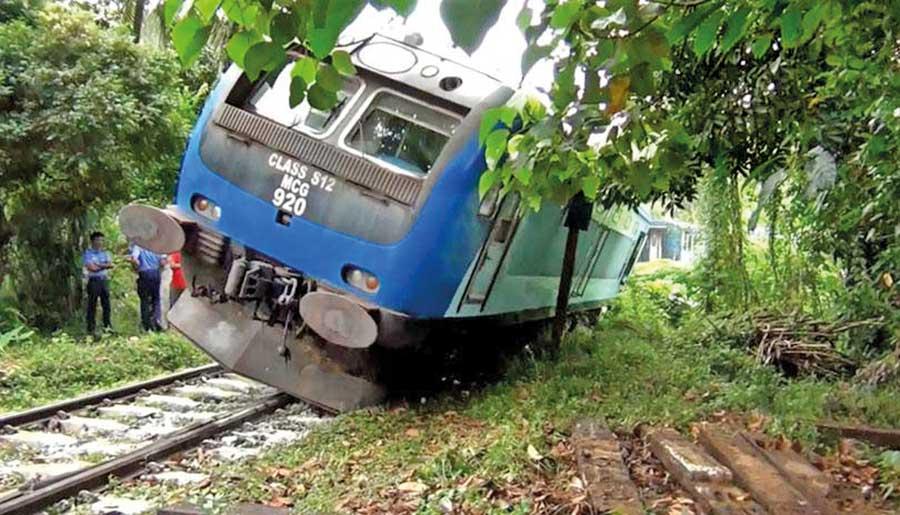
What does this mean for passengers?
According to SLR, approximately 3.72 million passengers travel by train daily. The economic crisis contributed towards the popularity of train travelling as it is seen as a more affordable mode of transport.
The back-to-back derailments over the past few months have caused unpleasant travel experience for commuters.
“The first time I got caught in a derailment last year, I expected to not encounter the same again. Unfortunately, a few months later, I experienced it again. There was no renovation made during the time between these two derailments,” a railway commuter said.
Passengers who often travel by intercity express trains to Colombo were reported to have experienced the most derailments. Constant travel delays were one of the major reasons which led to issues such as being unable to attend school or report to work on time.
“The train is the only affordable mode of transport for me, but the derailments aren’t helpful at all. Once I could not report to work as the train which I was travelling in had derailed. My workplace was not willing to accept this as an excuse. It was a tough time for me to travel by bus till the route was clear,” another disappointed commuter added.
Passengers who travelled by roads that had connecting railway lines were also affected whenever a train was found derailed, as this led to heavy traffic jams for long hours.
Costs incurred
“If delays or any other mishaps take place in one railway line, we try our best to compensate for it by making alternative arrangements, so that the damage is minimised. There is usually a standard number of people who travel by train per day so this mitigates the loss as well. If a train is cancelled, we do refund the ticket fare,” the GMR said when asked about passenger experience as well as losses incurred by SLR.
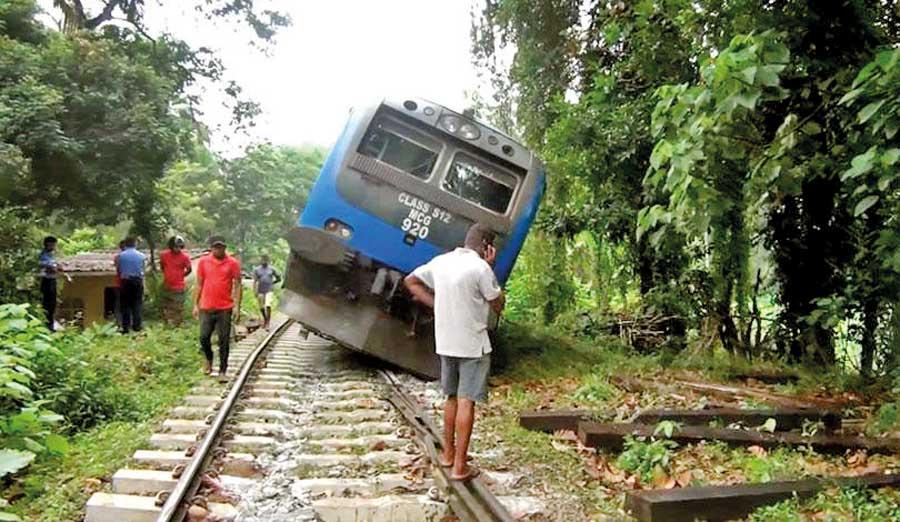
What is being done?
According to Mr. Gunasinghe, Sri Lanka Railways is working on measures to improve the condition of rail transport in the country, although this is proving to be a daunting task. The Railway Department, like all private and public entities, has been facing challenges since the start of the pandemic, with the difficulties worsening due to the economic situation in 2022. This has caused a spillover of issues that need to be urgently addressed to improve passenger safety and minimise inconvenience and losses.
The 3000-workforce increase at the Way and Works sub-department should hopefully contribute towards better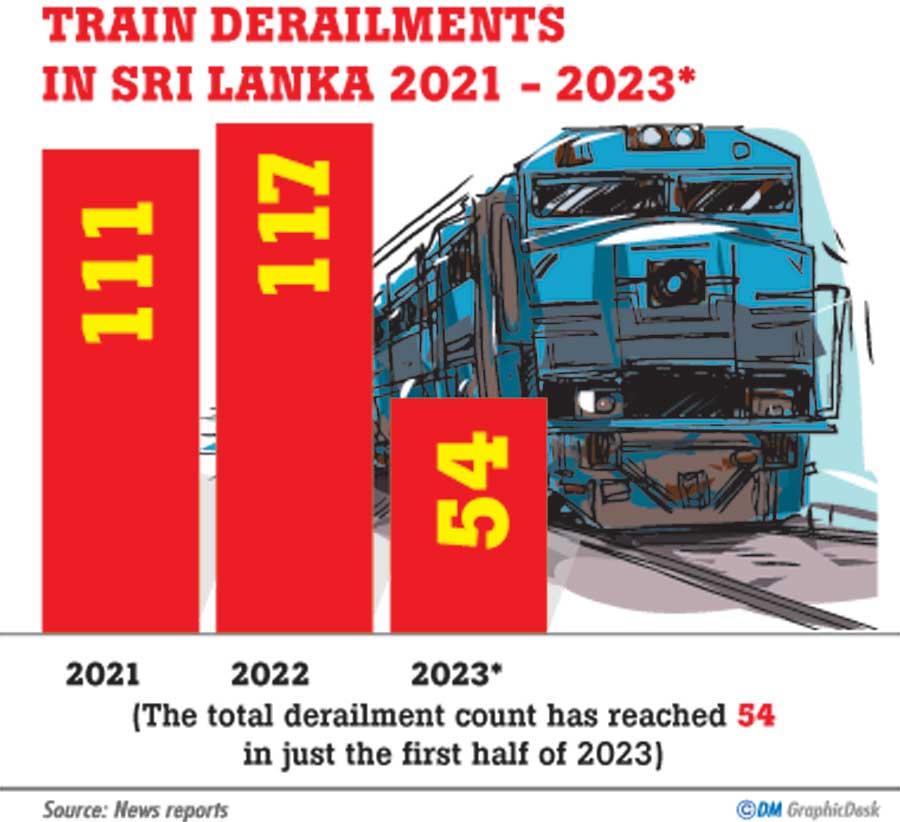 railroad maintenance. Regarding the backlog in terms of imported materials, Mr. Gunasinghe stated, “The backlog is still there, but the situation is much better now. Orders have been placed, tenders have been called for and we are also getting new batches of rails in a month’s time. This process is developing much better and faster, compared to the last two years.”
railroad maintenance. Regarding the backlog in terms of imported materials, Mr. Gunasinghe stated, “The backlog is still there, but the situation is much better now. Orders have been placed, tenders have been called for and we are also getting new batches of rails in a month’s time. This process is developing much better and faster, compared to the last two years.”
The GMR named the Eastern Line and Colombo to Wadduwa stretch as the main locations of concern due to the tracks being fairly old and the latter also being more vulnerable to corrosion due to exposure to the sea breeze. Another problem area that was identified was the Northern Line.
“Under the Northern Line Development Project, we are laying new tracks from Anuradhapura to Vavuniya. The next stage is rehabilitating from Maho to Anuradhapura so that line is under control,” he said.
Mr. Gunasinghe further stated, “In addition to this, some of the rails removed from the Northern Line from Anuradhapura to Vavuniya can be reutilised in areas such as Kelani Valley and sections of the Eastern Line.”
“With the economic crisis that gripped last year, controlling derailments all at once has been a task. Yet, as the problem is being sorted out gradually, there is a general decline being observed in the number of derailments compared to the last two years,” commented Kasun Chamara Jayasekara, of the Sri Lanka Station Masters Union (SLSMU).

Are these efforts sufficient and efficient enough?
According to the GMR, “The workforce was supplemented after the month of April and we recently imported some other components that were lacking. The weather pattern also contributed to the rise in derailments in April and May, since rain can make derailments more likely to occur.” Despite this, the month of June alone saw three derailments down three different running lines: Colombo to Kandy (4 June), Kandy to Badulla (23 June) and, most recently, Kelani Valley (27 June).
Sri Lanka Railways seems optimistic that the total derailment counts this year will be lower than that of its predecessors. With the steps SLR is taking in terms of imports of materials, gradually increasing the workforce dedicated to track maintenance, as well as the Northern Line Development Project, one can hope this optimism becomes a reality.
